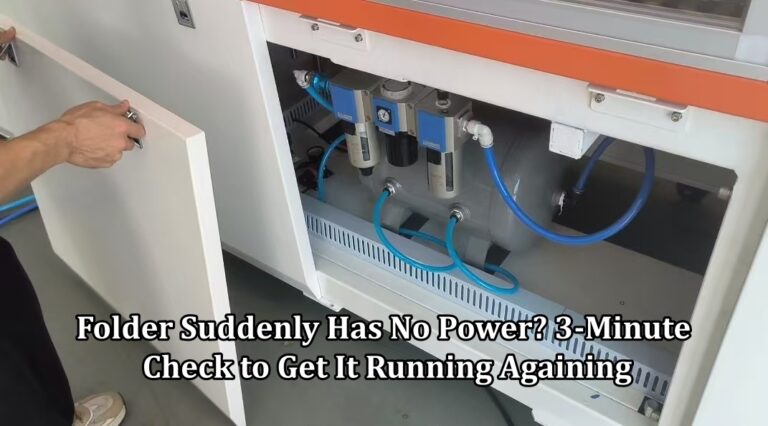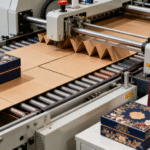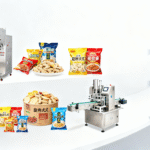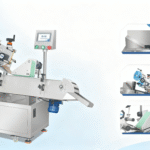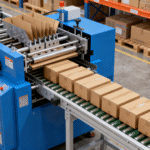Blurry Creases on Folder Gluer? The Adaptation Method for Blade Height and Pressure—Easy to Understand at a Glance
Alyssa/October 2,2025

For packaging workshops relying on folder gluers, blurry or uneven creases are a frustrating daily issue. Poor creases not only ruin the appearance of folded boxes but also cause folding deviations, increasing material waste and rework time. The root cause of most crease problems lies in mismatched blade height and pressure—two parameters that are easy to adjust once you master the right method, as proven by practical experience from packaging technicians.
Step 1: Master Blade Height Adjustment—The Foundation of Clear Creases
Blade height directly determines how deep the crease is: too low, and the crease is faint; too high, and it may cut through the paper or leave cracks. The standard adjustment principle varies by paper thickness:
For 150-250gsm paperboard (common for small gift boxes), set the blade height to 0.8-1.2mm above the lower die. This ensures the blade presses the paper to form a clear crease without damaging the surface.
For 250-400gsm thick cardboard (used for shipping boxes), increase the height to 1.2-1.5mm. A U.S. packaging factory specializing in electronics boxes found that adjusting the blade height from 0.6mm to 1.3mm for 300gsm cardboard reduced blurry crease complaints by 80%.
When adjusting, use a thickness gauge to measure the paper first, then turn the height-adjustment knob (usually on the side of the folder gluer) in small increments (1/8 turn each time). Test fold 5-10 boxes after each adjustment to check crease clarity—avoid over-adjusting in one go.
Step 2: Match Pressure to Paper Type—Avoid Too Soft or Too Hard
Even with correct blade height, improper pressure will ruin creases. Pressure that’s too low leads to incomplete creases; too high causes paper deformation or blade wear. The ideal pressure range is closely tied to paper material:
Coated paperboard (with a smooth surface, often used for cosmetic boxes): Use lower pressure (3-5 bar). Coated surfaces are prone to scratching, so excessive pressure may peel off the coating.
Kraft paperboard (thick and tough, for eco-friendly boxes): Increase pressure to 5-8 bar. A German logistics packaging supplier solved their kraft box crease issues by raising pressure from 4 bar to 6.5 bar, resulting in crisp, foldable creases.
Most modern folder gluers have a digital pressure display—monitor it while testing. If your machine uses manual pressure valves, mark the optimal pressure for common paper types (e.g., “Coated: 4 bar” “Kraft: 6 bar”) to avoid repeated adjustments.
Step 3: Post-Adjustment Checks—Ensure Long-Term Stability
After setting blade height and pressure, don’t forget two key checks:
Blade Sharpness: Dull blades can’t form clear creases even with perfect parameters. Replace blades if you see burrs or uneven edges (recommended every 30,000-50,000 boxes for standard blades).
Lower Die Alignment: If the blade and lower die are misaligned, creases will be off-center. Use a straightedge to confirm they’re parallel—adjust the lower die position if there’s a gap.
A Canadian packaging workshop documented that combining these three steps cut their crease-related waste from 12% to 3% within a month. For operators new to folder gluers, the key is to “test small batches first, then scale up”—rushing adjustments often leads to more problems.
With the right blade height and pressure adaptation, blurry creases will no longer be a headache. These simple, repeatable steps help you achieve consistent, clear creases every time—saving time, reducing waste, and ensuring your folded boxes meet quality standards.
Newsletter Updates
Enter your email address below and subscribe to our newsletter

